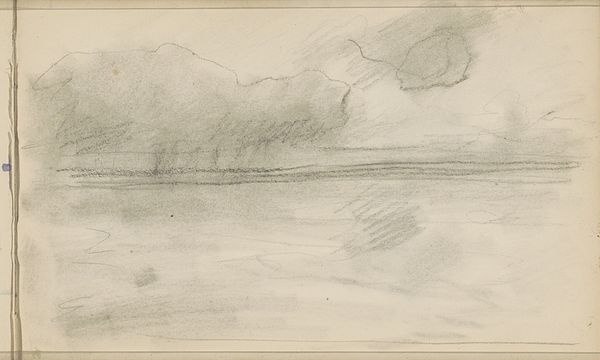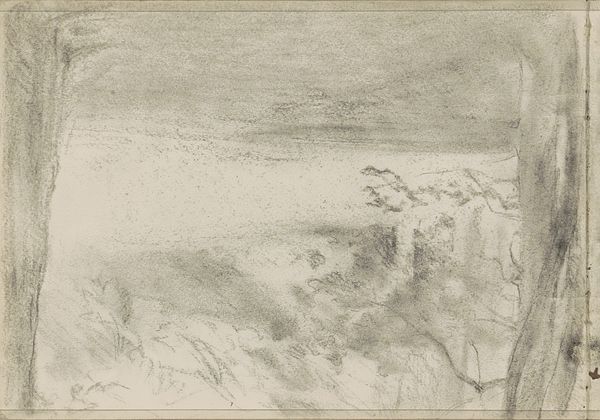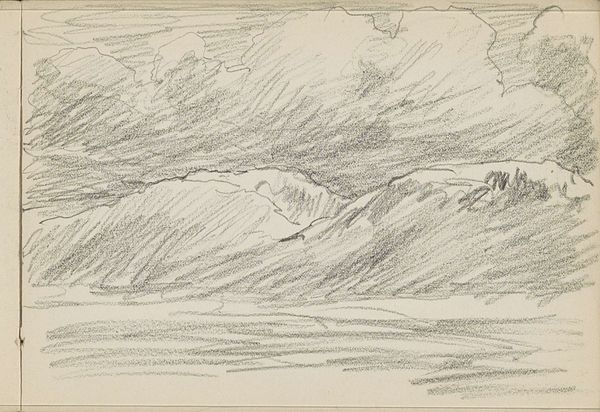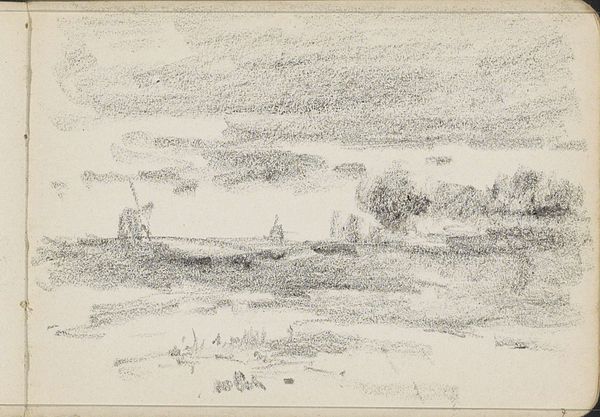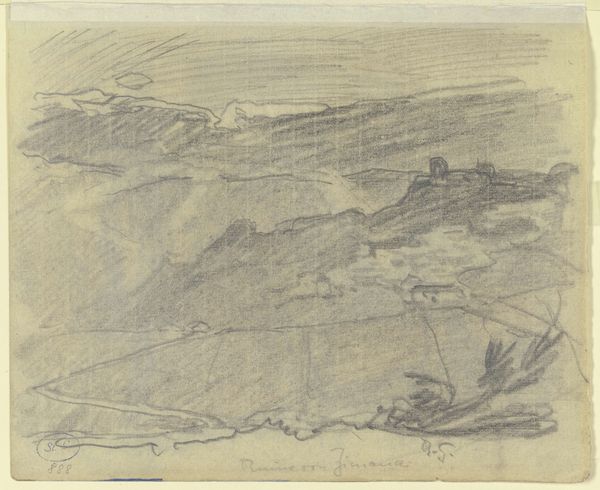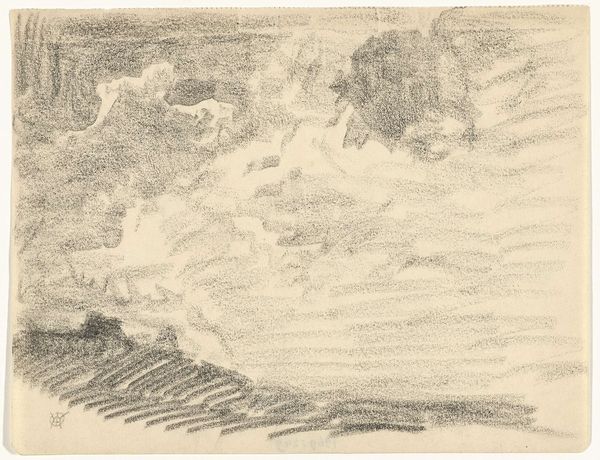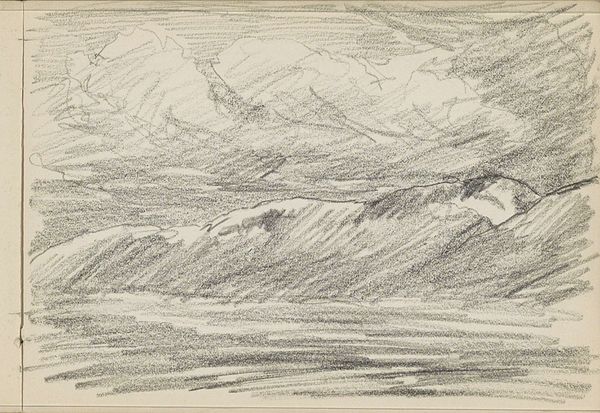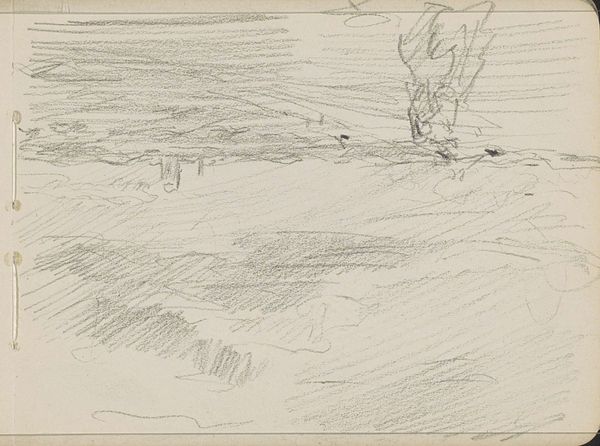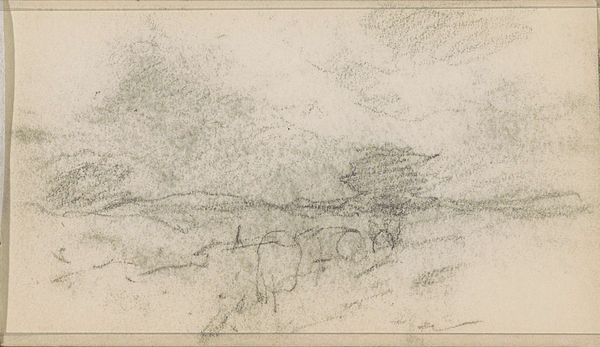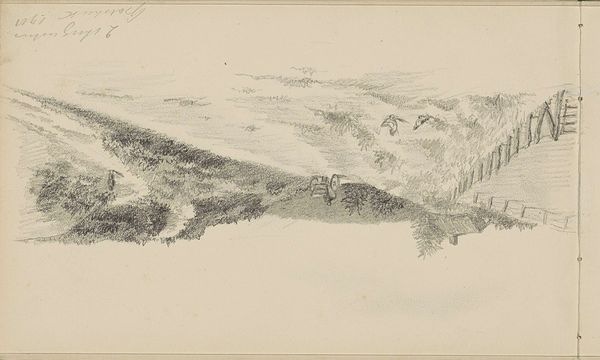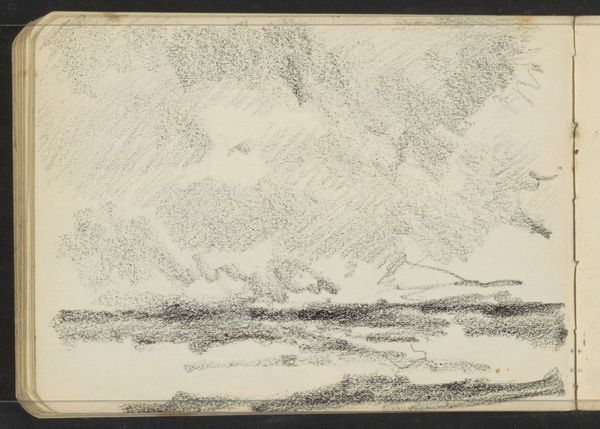
drawing, pencil
#
drawing
#
pencil sketch
#
landscape
#
river
#
etching
#
pencil
#
realism
Copyright: Rijks Museum: Open Domain
Editor: This is "River with a Figure in a Rowboat," a pencil drawing by Bramine Hubrecht, likely created between 1865 and 1913. It’s held at the Rijksmuseum. It feels incredibly quiet, almost like a whisper of a scene. The indistinct lines give it a dreamlike quality. As a historian, what strikes you most about this drawing? Curator: The quietness is definitely key. What interests me immediately is thinking about the culture that produces such a work. We must consider the social context of landscape art and sketching, as they became increasingly accessible forms of artistic expression during the late 19th and early 20th centuries. The rising middle class gained access to art materials and leisure time, influencing this focus on everyday scenes and intimate portrayals of nature. Why do you think a scene like this was appealing to the artist and, potentially, their audience? Editor: I imagine that for people in growing cities, such natural settings would provide some relief. A space for respite...almost like an escape. Did works like this often portray ideas related to social class or urban life at the time? Curator: Yes, certainly. The accessibility and portrayal of such works could represent the rising importance of leisure within society, highlighting that time was a valuable commodity. A deeper dive into the artist’s background might provide valuable insight, too, considering class, gender, and education and how they may have influenced the message within their work. How might our interpretation change knowing Hubrecht was a woman? Editor: That’s such an important point. A woman finding agency in depicting her surroundings speaks volumes, doesn't it? Curator: Precisely. And her perspective and access may well have varied greatly to those of her male counterparts. I see the work as both an expression and potentially, a political act, and to fully understand its meaning, one needs to delve deeper into the historical backdrop and gendered social conventions. Editor: That completely shifts my perspective! I'll definitely need to consider how societal factors influence my reading of artworks moving forward.
Comments
No comments
Be the first to comment and join the conversation on the ultimate creative platform.
